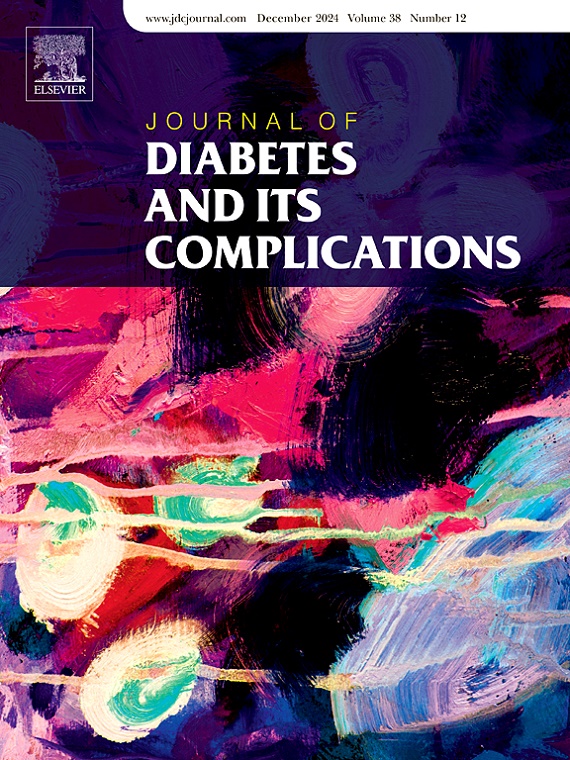The role of hyperbaric oxygen therapy in the treatment of diabetic foot ulcers - A literature review
IF 3.1
3区 医学
Q3 ENDOCRINOLOGY & METABOLISM
引用次数: 0
Abstract
Diabetic Foot Ulcers (DFUs) are chronic foot wounds, in a person with diabetes, which are associated with peripheral arterial insufficiency and/or peripheral neuropathy of the lower limb. Recent UK audit figures report that approximately 50–60 % of DFUs remain unhealed after 12 weeks. Previous research has suggested that ischaemia plays a key role in the pathophysiology of many chronic wounds, including DFUs. For this reason, hyperbaric oxygen therapy (HOT) has been investigated. The study aimed to investigate 1) Current understanding of the physiology of normal wound healing and the pathological mechanisms that occur in DFUs to interrupt these processes; 2) Effectiveness of current DFU treatment approaches; 3) Effectiveness from clinical trials and meta-analyses for any demonstrated therapeutic benefits of HOT in the treatment of DFUs, 4) Patient selection criteria for HOT, and patients who stand to benefit most from treatment.
The review found that wound healing is a complex process, involving many cells and signalling molecules, and it remains incompletely understood. However, current evidence suggests that hyperglycaemia, hypoxia, chronic inflammation (due to infection, immune-cell dysfunction or other causes), peripheral neuropathy, and macro- and micro-vascular dysfunction may all adversely affect DFU healing. The review found that current NICE guidelines do not approve HOT therapy in the UK for DFU's, despite encouraging clinical research findings. HOT shows theoretical promise and has been successfully used in the treatment of individual DFUs for several decades. Despite this, there remains a lack of strong clinical evidence of benefits to encourage HOT's wider use. The review found that there were four important patient selection criteria for HOT treatment, including glycaemic control, possible contraindications and complications associated with treatment, ulcer severity and resistance to first and second line treatments. The review concluded that further high-quality clinical research is needed to improve the evidence base.
高压氧治疗在糖尿病足溃疡治疗中的作用-文献综述
糖尿病足溃疡(DFUs)是糖尿病患者的慢性足部伤口,与周围动脉功能不全和/或下肢周围神经病变有关。最近英国的审计数据显示,大约50 - 60%的dfu在12周后仍未愈合。先前的研究表明,缺血在许多慢性伤口的病理生理中起着关键作用,包括DFUs。为此,高压氧治疗(HOT)已被研究。本研究旨在探讨1)目前对正常伤口愈合的生理学认识以及DFUs中发生的中断这一过程的病理机制;2)当前DFU治疗方法的有效性;3)临床试验和荟萃分析显示的热疗治疗DFUs的疗效,4)热疗的患者选择标准,以及从治疗中获益最多的患者。这篇综述发现,伤口愈合是一个复杂的过程,涉及许多细胞和信号分子,但它仍未被完全理解。然而,目前的证据表明,高血糖、缺氧、慢性炎症(由于感染、免疫细胞功能障碍或其他原因)、周围神经病变以及大血管和微血管功能障碍都可能对DFU愈合产生不利影响。该综述发现,尽管临床研究结果令人鼓舞,但目前的NICE指南不批准在英国对DFU进行热疗法。HOT显示出理论上的希望,并已成功地用于治疗个别dfu几十年。尽管如此,仍然缺乏强有力的临床证据来鼓励热疗法的广泛应用。回顾发现,HOT治疗有四个重要的患者选择标准,包括血糖控制、可能的禁忌症和与治疗相关的并发症、溃疡严重程度和对一线和二线治疗的耐药性。该综述的结论是,需要进一步的高质量临床研究来改善证据基础。
本文章由计算机程序翻译,如有差异,请以英文原文为准。
求助全文
约1分钟内获得全文
求助全文
来源期刊

Journal of diabetes and its complications
医学-内分泌学与代谢
CiteScore
5.90
自引率
3.30%
发文量
153
审稿时长
16 days
期刊介绍:
Journal of Diabetes and Its Complications (JDC) is a journal for health care practitioners and researchers, that publishes original research about the pathogenesis, diagnosis and management of diabetes mellitus and its complications. JDC also publishes articles on physiological and molecular aspects of glucose homeostasis.
The primary purpose of JDC is to act as a source of information usable by diabetes practitioners and researchers to increase their knowledge about mechanisms of diabetes and complications development, and promote better management of people with diabetes who are at risk for those complications.
Manuscripts submitted to JDC can report any aspect of basic, translational or clinical research as well as epidemiology. Topics can range broadly from early prediabetes to late-stage complicated diabetes. Topics relevant to basic/translational reports include pancreatic islet dysfunction and insulin resistance, altered adipose tissue function in diabetes, altered neuronal control of glucose homeostasis and mechanisms of drug action. Topics relevant to diabetic complications include diabetic retinopathy, neuropathy and nephropathy; peripheral vascular disease and coronary heart disease; gastrointestinal disorders, renal failure and impotence; and hypertension and hyperlipidemia.
 求助内容:
求助内容: 应助结果提醒方式:
应助结果提醒方式:


